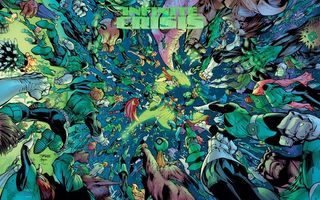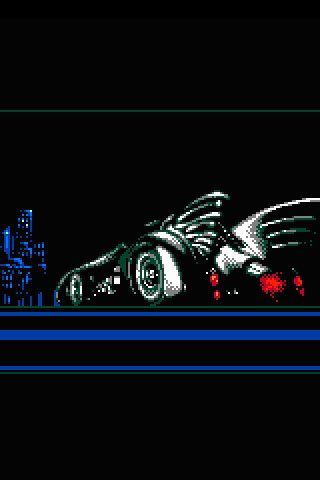DC Universe Online: We talk post-launch with Jim Lee and Marv Wolfman
Celebrated comic creators involved in the title share their thoughts on the title
GR: Yes, I thought a good example of that was how Geoff Johns handled Gorilla Grodd in the Flash comics.
JL: Exactly, it’s all in the handling. You start out with these unusual origins and they can really grow into something more significant.
GR: As a big Green Lantern fan, I was always looking for more appearances by the Lantern Corps in the game. Any plans of expanding the roles of those characters in DCUO?
JL: Well, the Sinestro Corps does play a big role later in a whole series of missions, ending in a big clash between the Yellow and Green Lanterns. But I think when the developers were looking at power-sets for, including the very specific situation of having a power ring, it was something that didn’t really tie-in to the initial concept of the storyline. Also it can’t just be any old power, the rings are a significant part of the DCU, they need to be treated with prestige.
I think it may eventually show up, but I think they want to give it a proper introduction. And it’s always good to have something to look forward to. I heard some people say, “Oh, I hit the level cap in two days.” But there’s so much more in the DC Universe, so just wait, you’ll start seeing all this stuff roll out, and it’ll be pretty amazing when it does.
GR: Now that the game’s been out for a little while, what type of feedback have you been getting, both positive and negative?
JL: I think the most common problems were created by the incredible demand for the game at launch, like the fact that they had to add two US and two European servers right away to meet all those people rushing towards the gates, which caused some technical issues. In terms of gameplay, people really seem to love encountering stuff from the comics. I’d see people tweet about fighting Bane or reaching some other milestone and I think they’re just excited to see these characters and battle against them or beside them.
Sign up to the GamesRadar+ Newsletter
Weekly digests, tales from the communities you love, and more

The game was designed in a very specific way so people would feel powerful right from the start, get to the max level relatively soon compared to other MMOs, and then make to the end game as fun as the leveling process. When people say that it’s different from other MMOs, well, that was intentional.
GR: Yeah, if you’re going to be a superhero, you want to get to the goods quicker than if you’re training to be a knight.
JL: And I’m so busy working that it always surprises me when some people hit the level cap so fast. I never really feel underpowered, though there is a big jump at level nine where you can travel much faster, but at all times I feel like I can master the content. I don’t feel this urgent need to get to 30, I know that time will come.
GR: It must be a little strange playing a game that looks like your art.
JL: Just to be clear though, I didn’t create 99.99999 percent of the world. (Laughs) But it’s an overwhelming thing when you jump in the game and think about the number of years that were put into this game and the number of talented artists, modelers, and developers that contributed so much. It’s amazing that these things can get made at all. Just recently I flew to the top of Lex Corp Tower and when you’re there you can look down even at the rugged coastline of Metropolis and it’s just a spectacular view. The environmental artists just nailed it. I have almost as much fun exploring the cities as doing the missions.
GR: Probably our first hour of the game was spent running around Gotham checking out all the locales.
JL: Did you see Crime Alley with the dilapidated theatre where Batman’s parents were killed and the little rose on the ground? There are many little touches in the cities that if you’re racing to level 30 you’re going to miss them, and touches like those really show the love and care put into the game.
GR: Here’s a quick one that has more to do with your art in general. Some things you’ve drawn have really stuck with us over the years. Such as in Superman: For Tomorrow, there was a point where Superman fought Mount Rushmore. Did that seem particularly strange to you when you drew it?
JL: It is a nutty scene. I even called (writer) Brian (Azzarello) and was like really? But he convinced me it was cool and I just went with it. The creative process is doing what you think is right, but acknowledging that sometimes someone else might have a better sense of what’s cool and just rolling with it. With something like that it really speaks to the tradition of the characters. In the 50s no one would bat an eye with a situation like that one. It was really about a battle between Superman and something just as iconic.
GR: One last question about your art, and admittedly it’s a pretty nerdy question, but many artist approach Batman’s ears differently. You maybe draw the smallest Bat-ears in history, what’s the reason for that?

JL: Yeah, why does everyone else draw it wrong? (Laughs) The cool thing about comics is that, even with these characters that have been licensed and exploited in all this different media, at the end of the day when we draw the comics we’re encouraged to do our versions of these characters. It’s not like drawing Mickey Mouse exactly the same every time. So everybody has their own approach to things like the Bat-symbol, the ears, the cape. There’s a fair amount of interpretation and I’ve always liked the short-eared version was big in the 50s and that Frank Miller used it in Dark Knight Returns. I just felt like the long ears would get in the way, hitting the tops of ceilings and what not. But now I’ve done so many short ears maybe I’ll mix it up next time.
Henry Gilbert is a former GamesRadar+ Editor, having spent seven years at the site helping to navigate our readers through the PS3 and Xbox 360 generation. Henry is now following another passion of his besides video games, working as the producer and podcast cohost of the popular Talking Simpsons and What a Cartoon podcasts.
Most Popular





